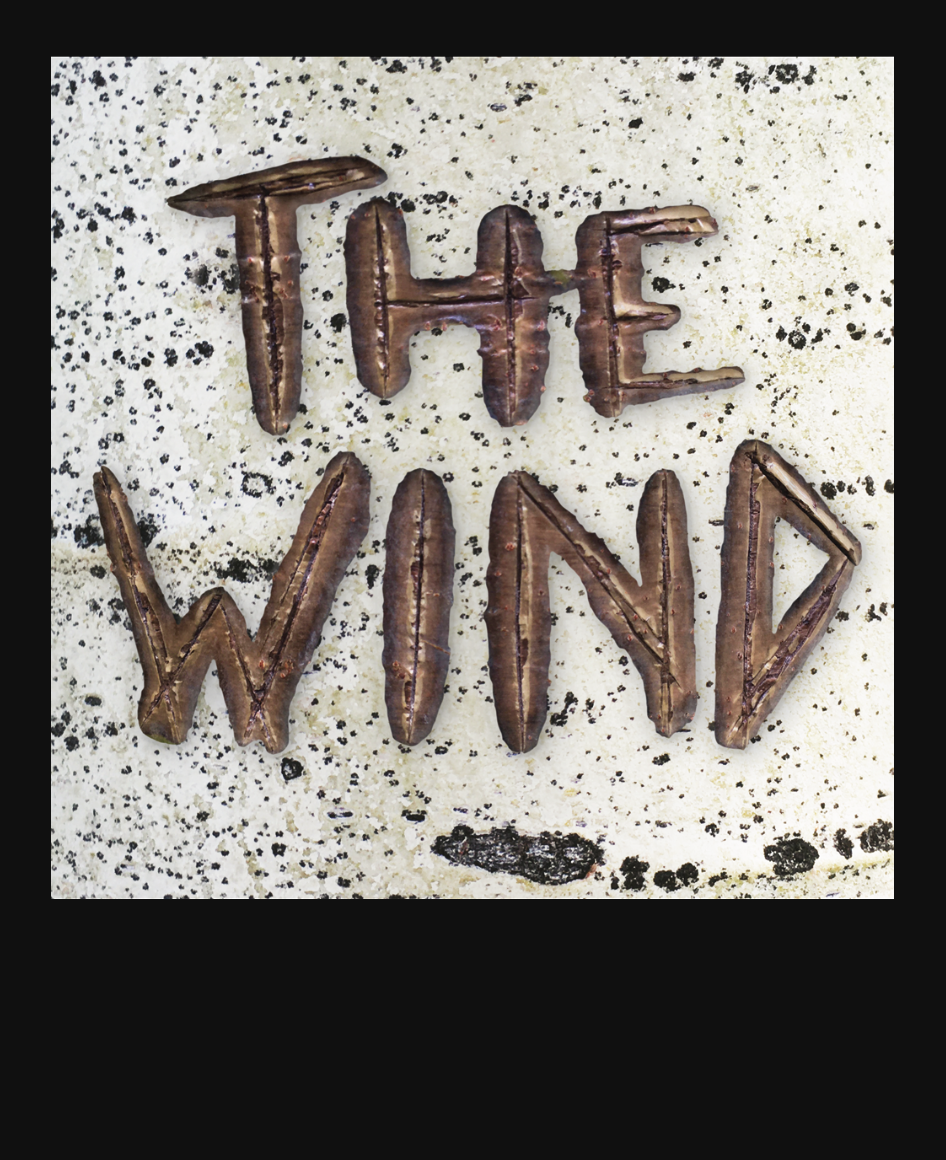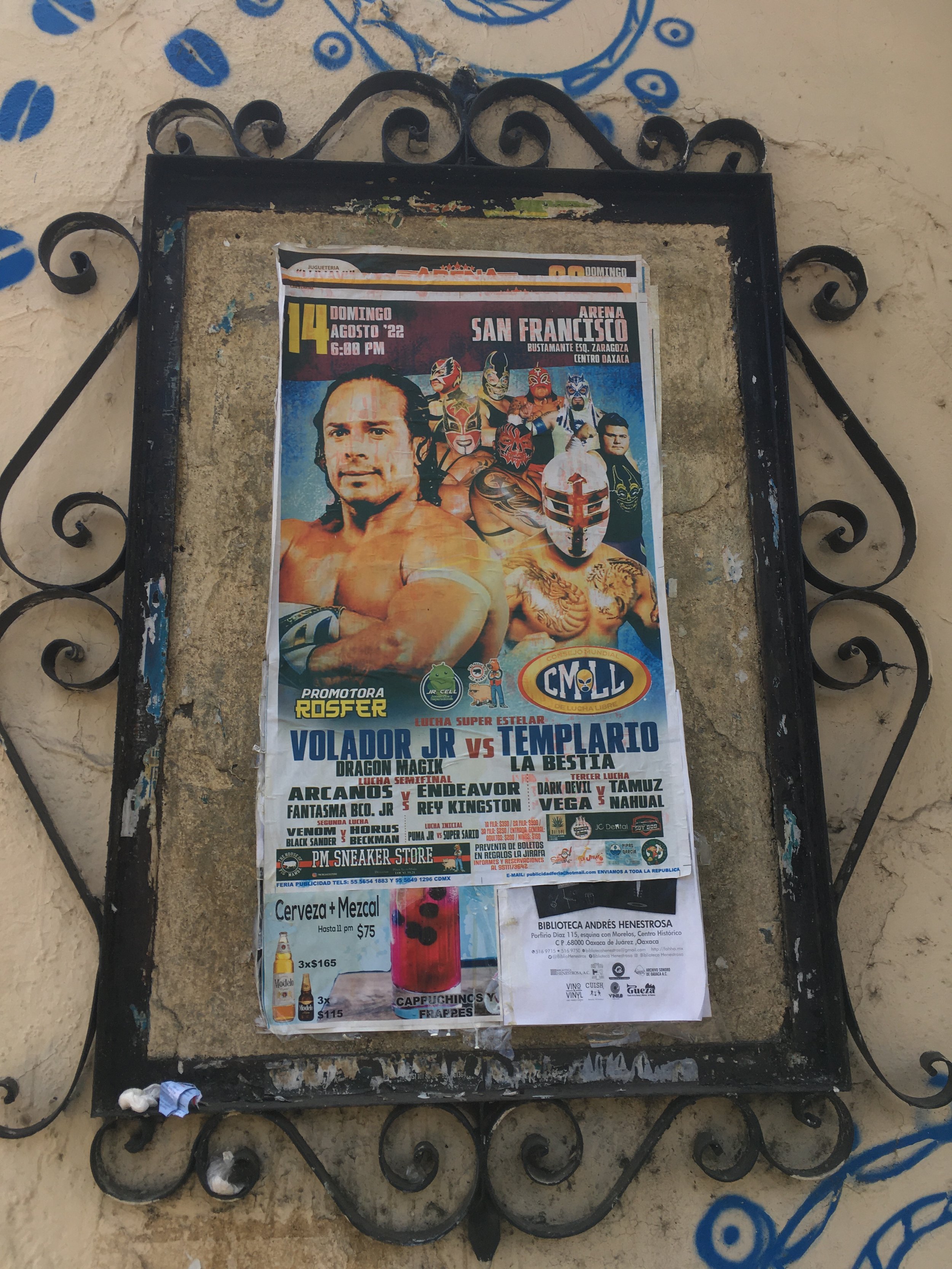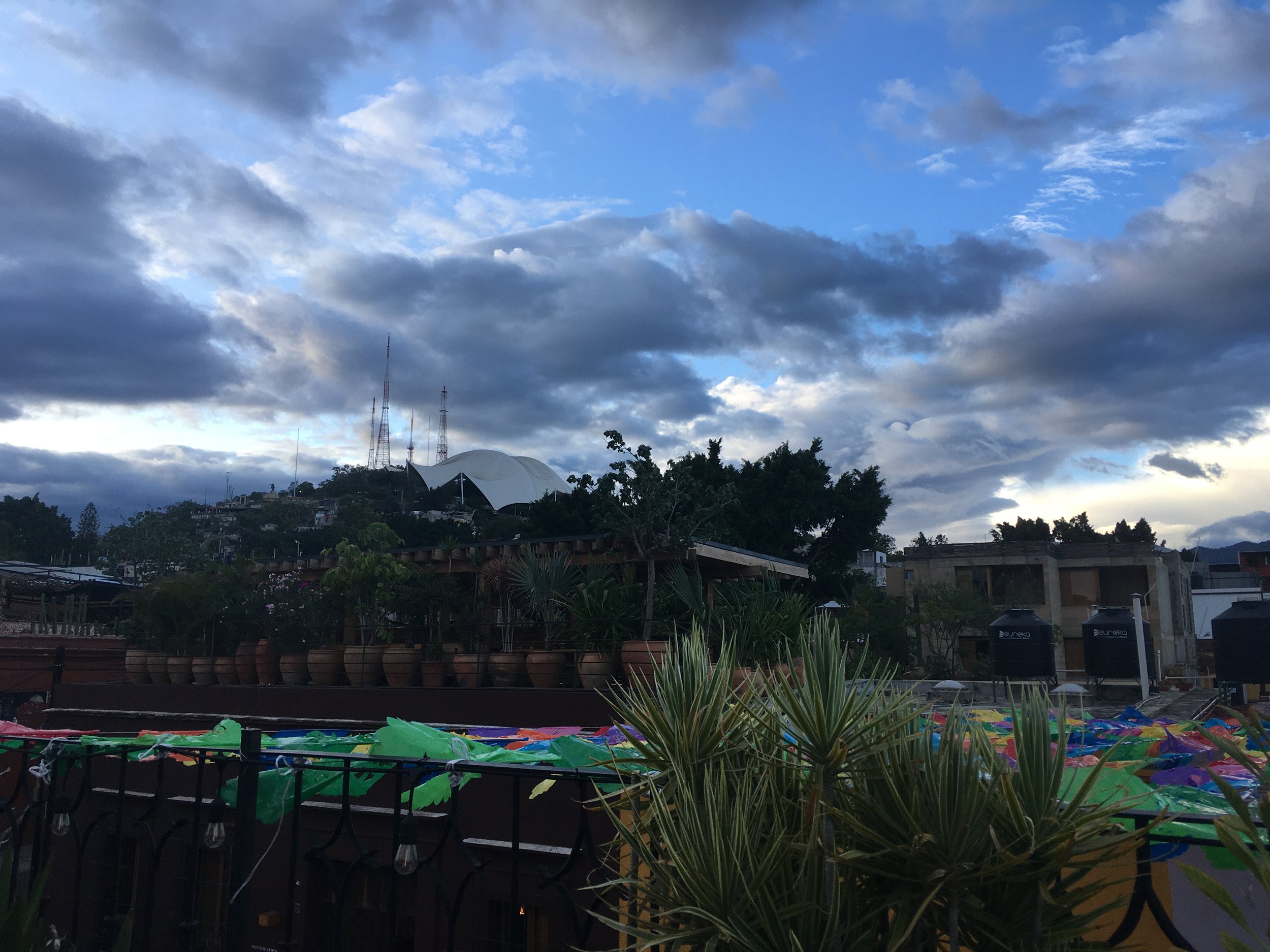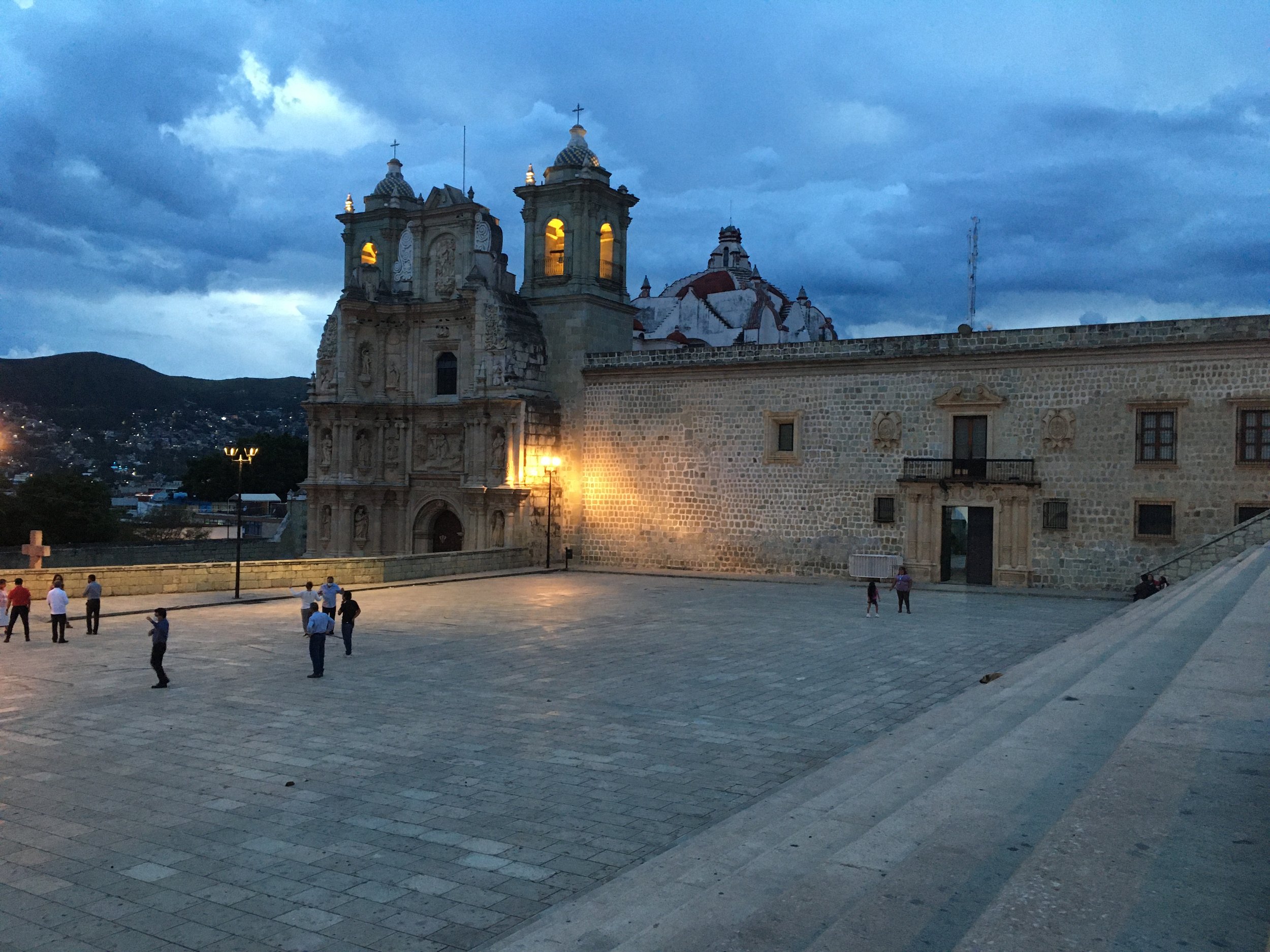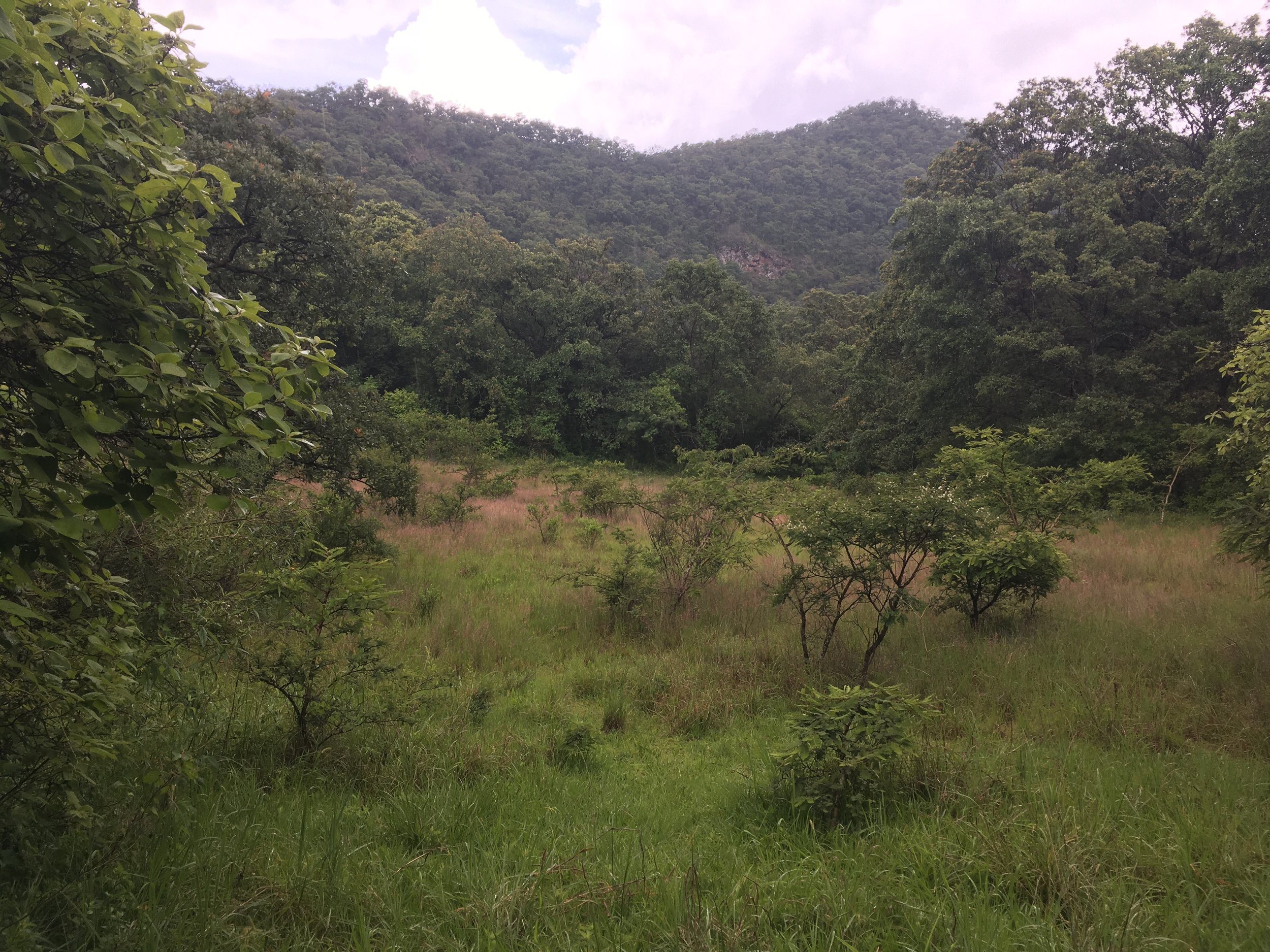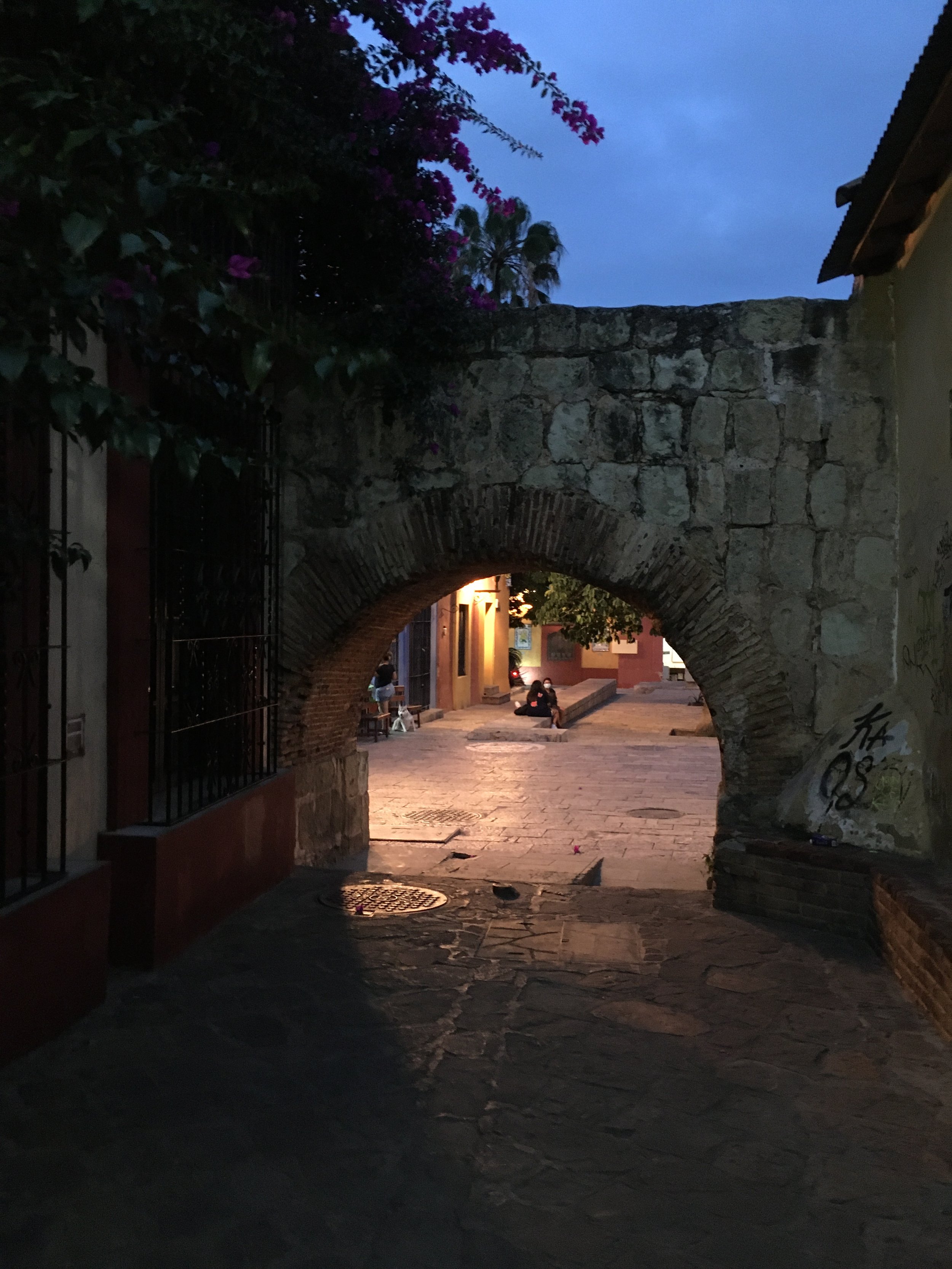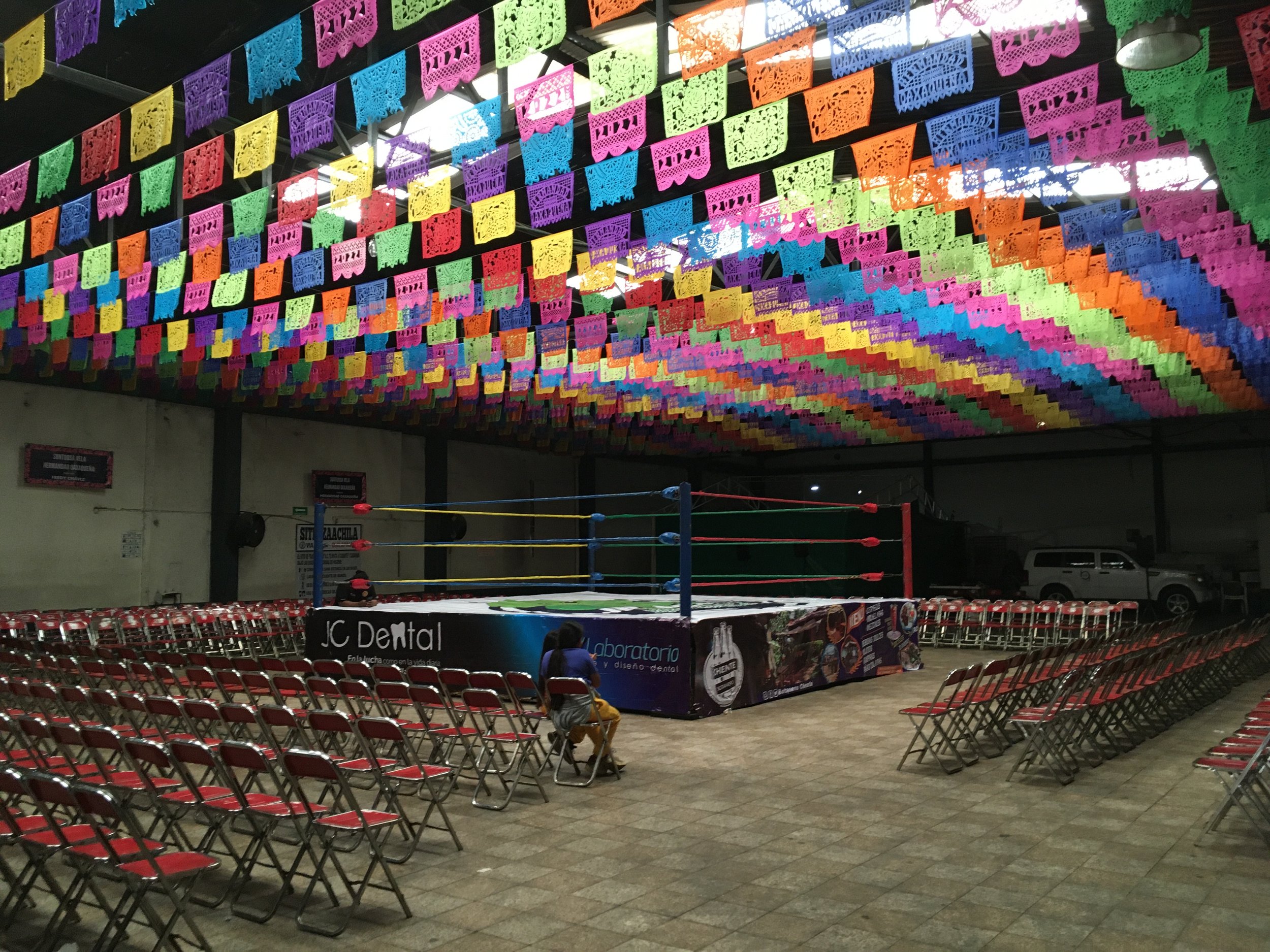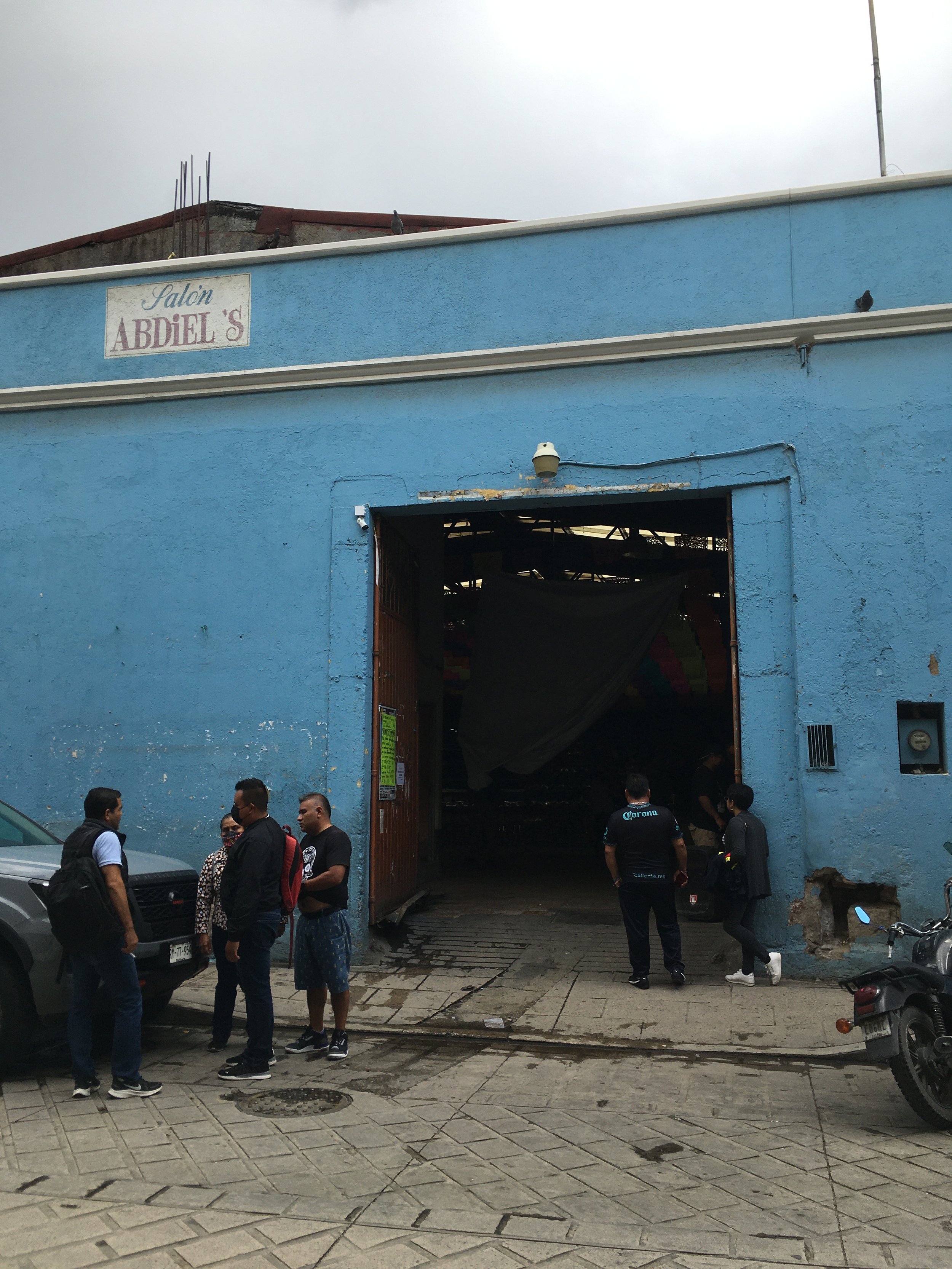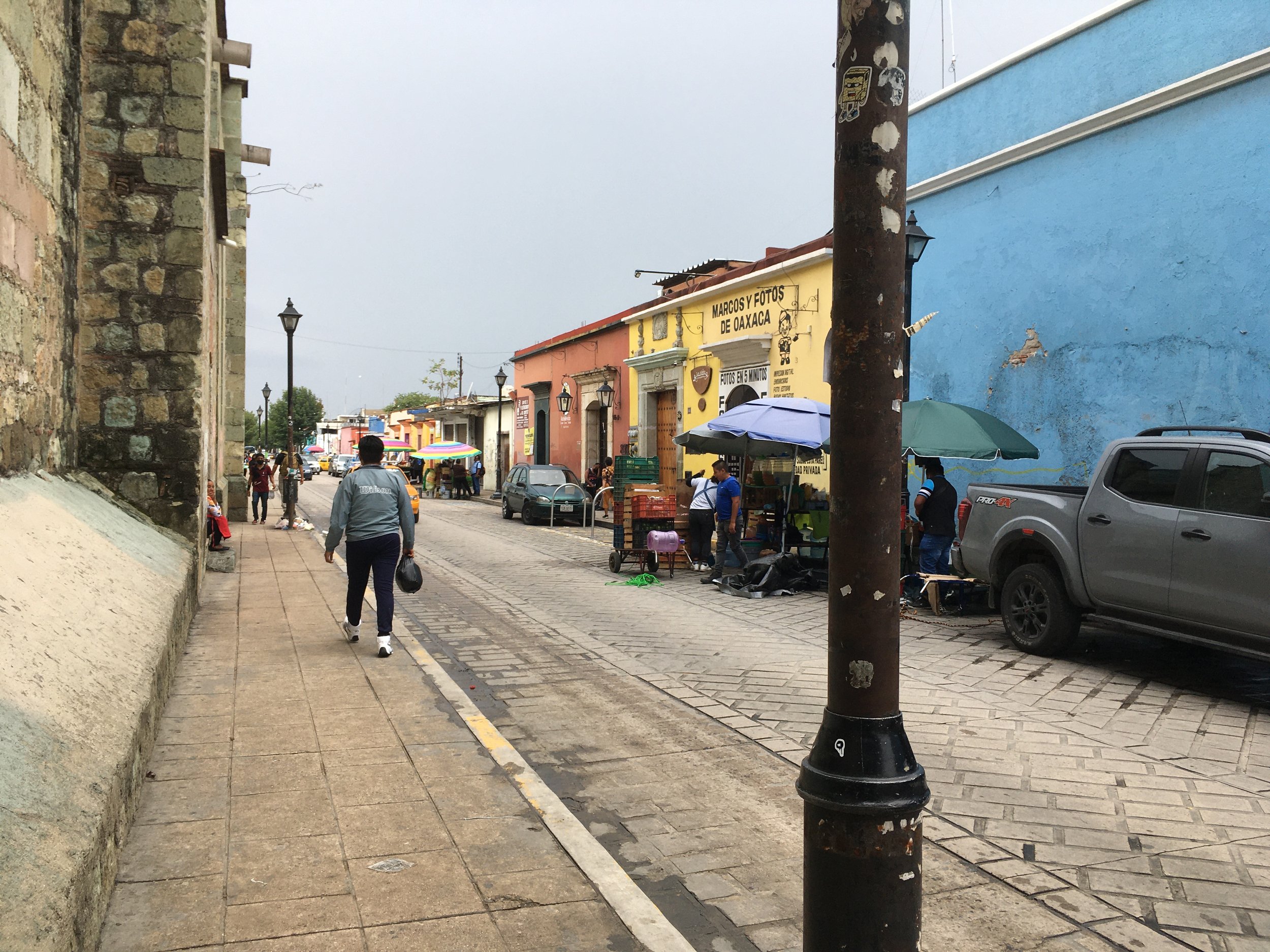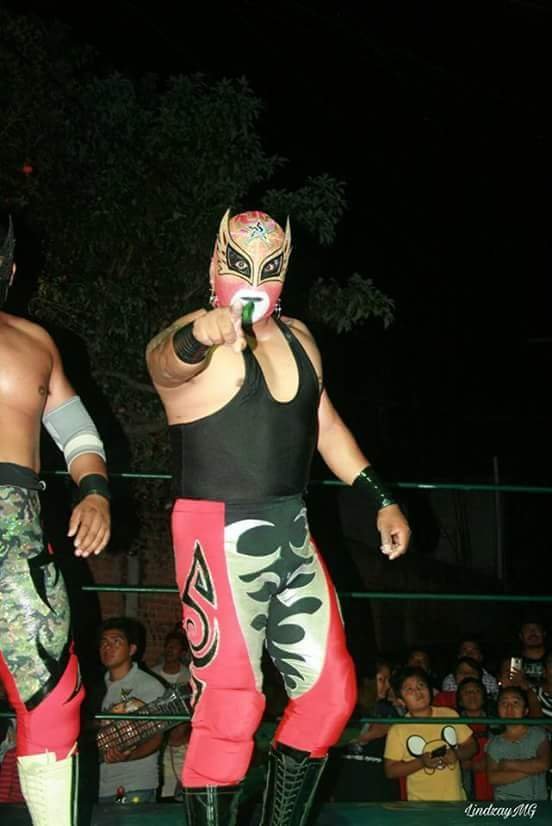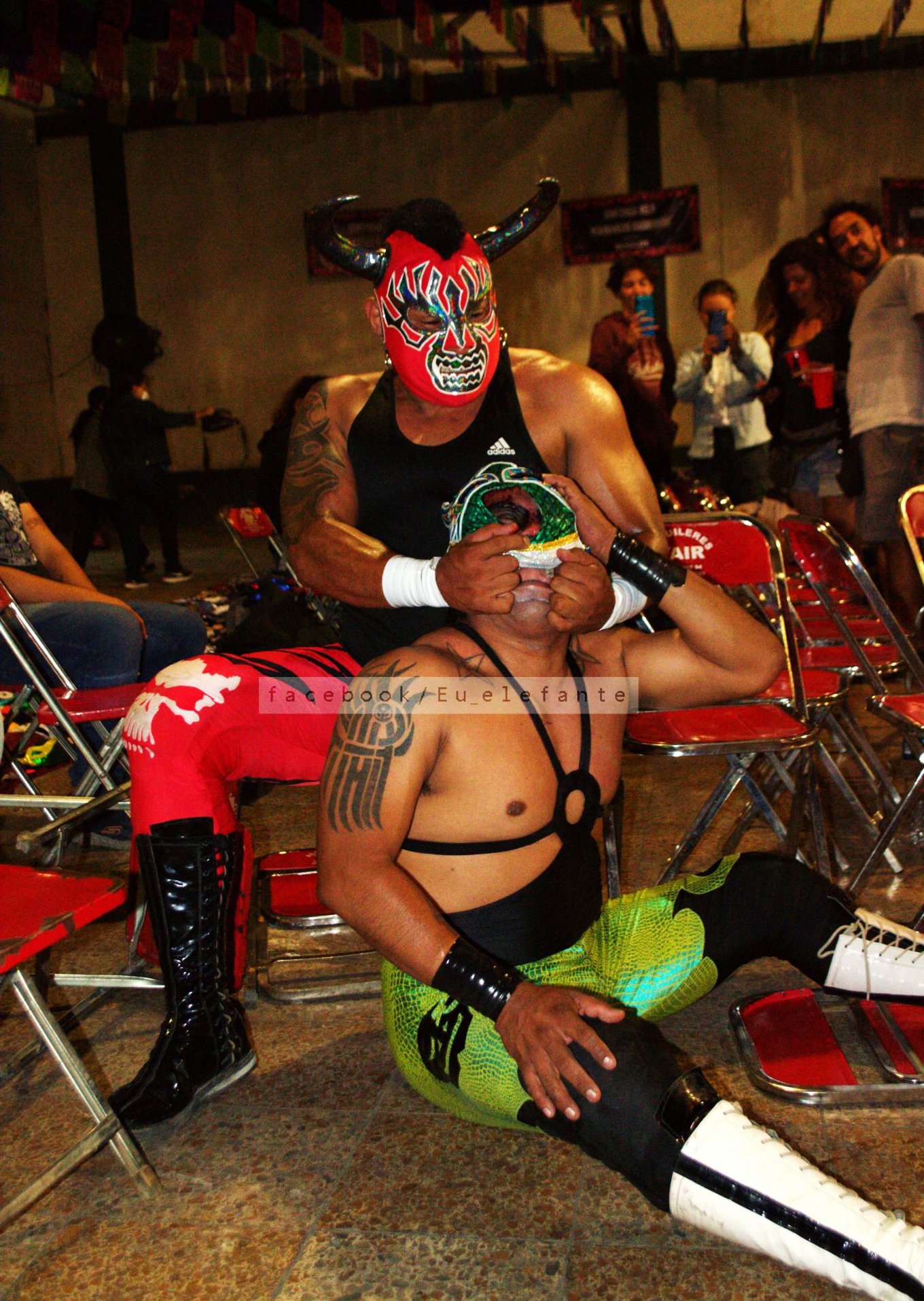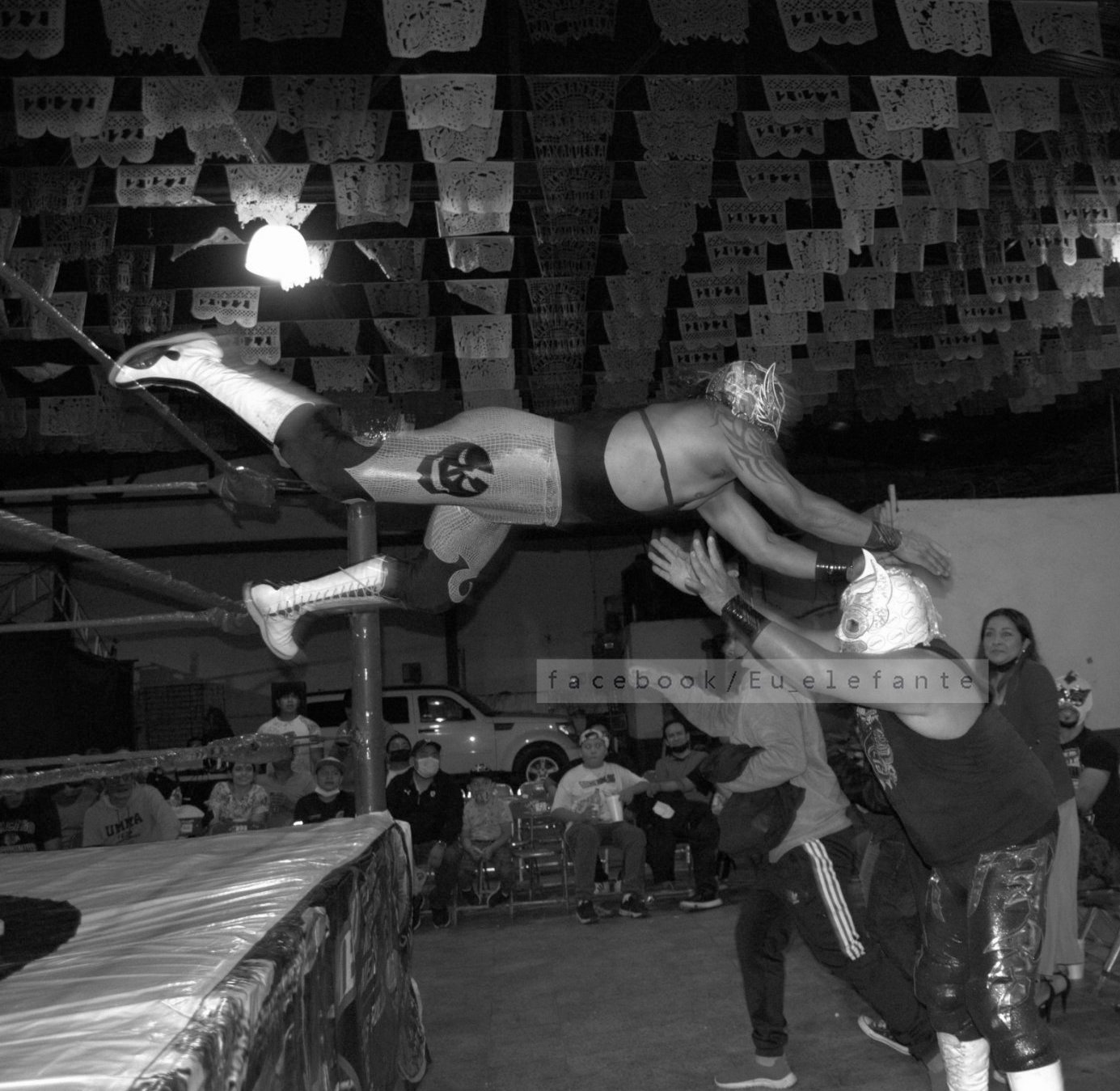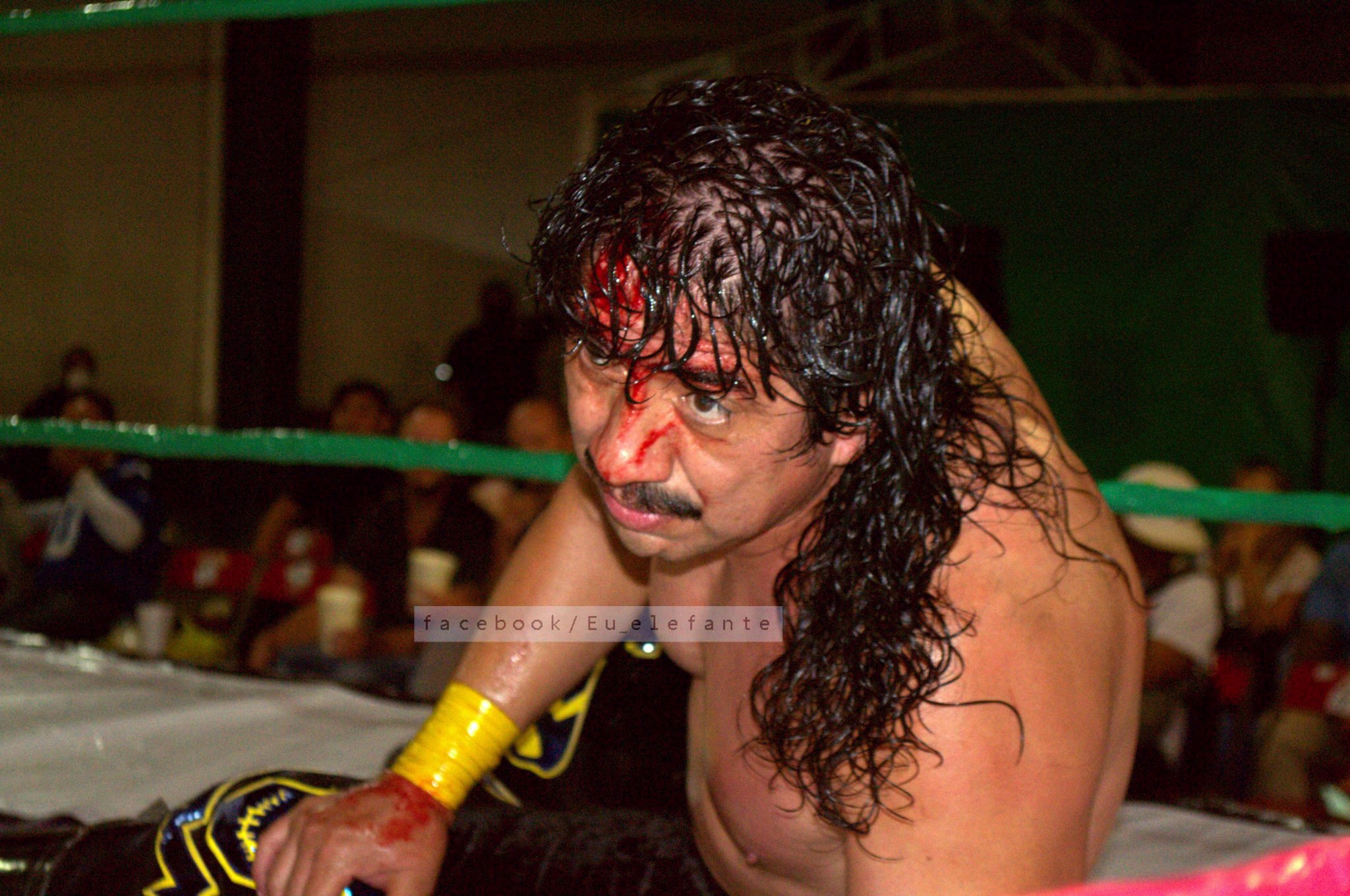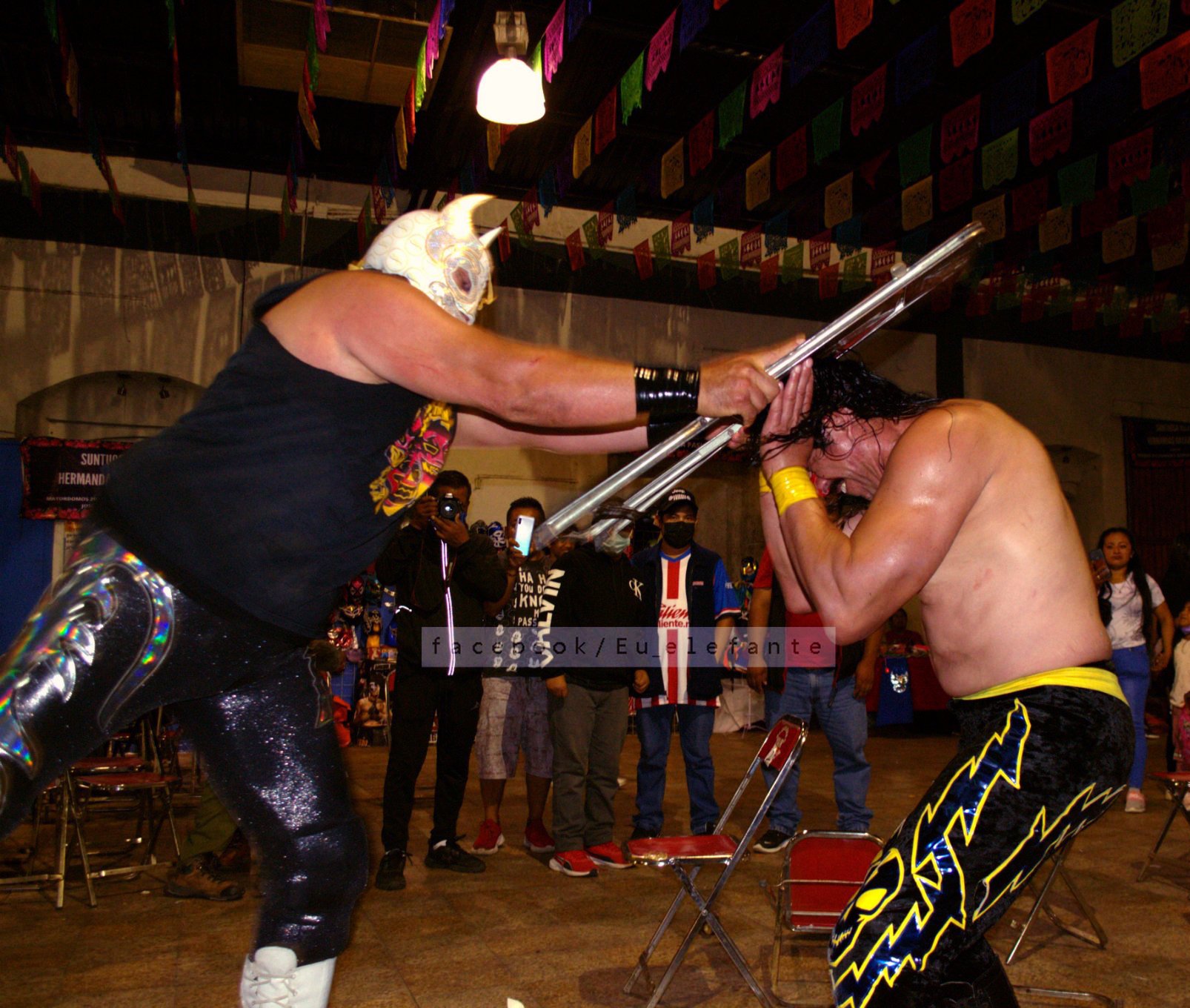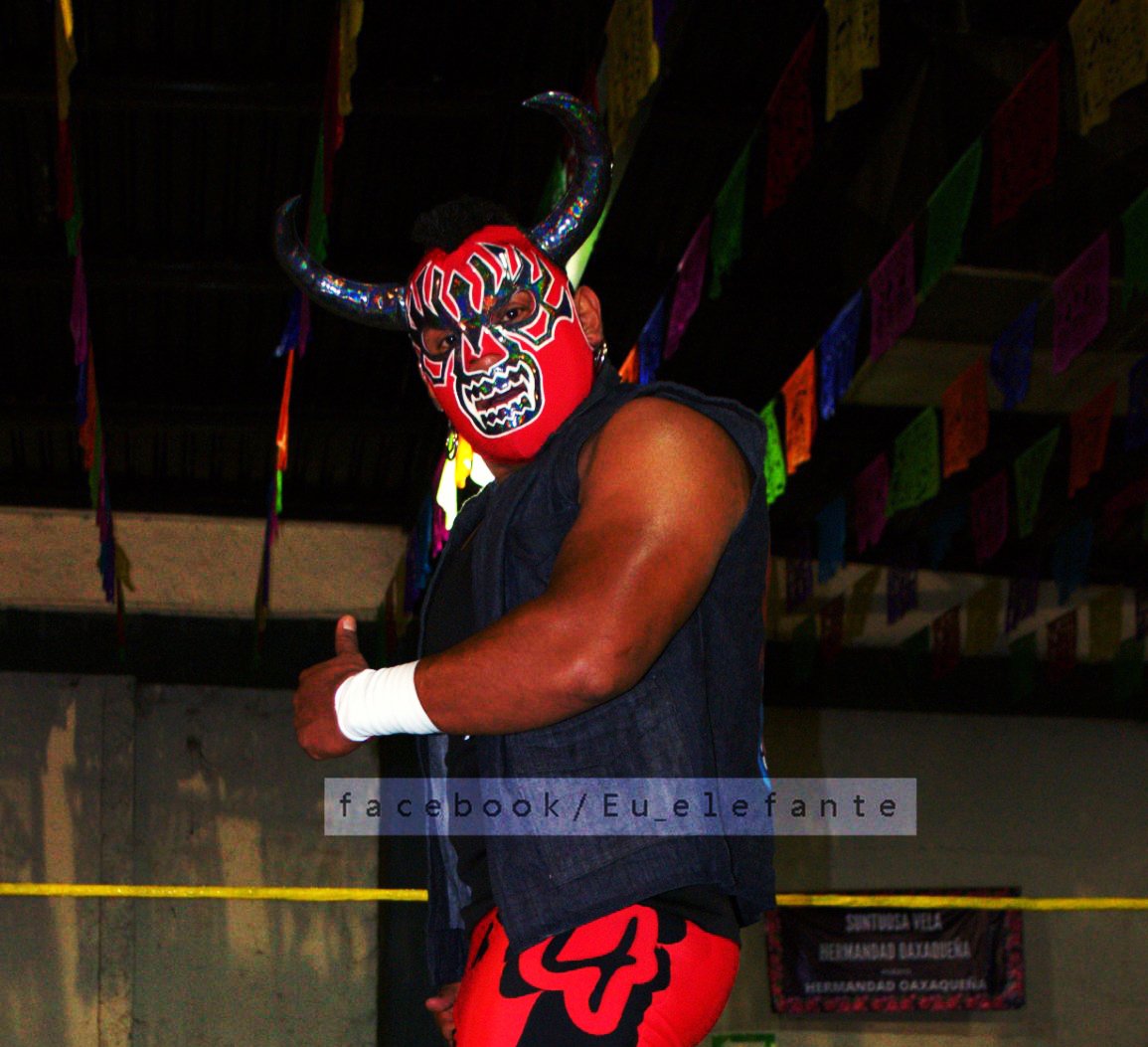A ringside episode from Oaxaca, Mexico
A light summer rain darkens the green stone walls of the old church, and I stand at its hip listening across the grey brick side street.
A 3 wheeled moto-taxi rounds the corner and slowly approaches. It has a flatbed on which sits a big rectangular billboard. The outside of the billboard is a collage of portraits of masked men posing in bright reds and blues and greens, and somewhere inside the billboard is a sound system.
The moto-taxi parks and the driver ducks past a fruit stand and a corner store selling cell phone sim card refills on his way inside. The sky is darkening, but you can still see the mountains’ silhouette north of the city.
Across from the church is Arena San Francisco: a blue stucco warehouse with a garage door big enough for a truck, which is exactly what the door is for because during the day Arena San Francisco is 1-floor parking garage. But stepping inside onto the slick tile floor, you wouldn’t know it tonight.
In the center of the concrete room is a full wresting ring. The ropes, flash yellow, red, blue and green. And above the ring, long parallel strings of matching colorful flags flitter in the florescent light.
The ring is 3-4 feet high, and sheathed in a sort of vinyl cover with sponsor logos, most notably a dentist’s office. And surrounding the ring on all 4 sides, are about a dozen rows of red aluminum folding chairs, ready for an audience.
The sonic billboard is still audible out on the street. Tonight, it says, Lucha Libre.
The state of Oaxaca is in south central Mexico and reaches from Mexico’s southern coast on the Pacific Ocean, up into the high mountains.
From those wooded mountains to the north you can see the capital — Oaxaca, or Oaxaca de Juarez. Benito Juarez, was president of Mexico from 1858 to 1872. He was from the state of Oaxaca and was ethnically Zapotec, the first indigenous president in all of North and South America, post colonization.
In Arena San Francisco, the warm-up fights have slipped past. The warm rain plus a delayed beer delivery, have kept the audience a bit subdued -- which I’d estimate at about 150 people. But toward the 3rd or 4th fight, that’s when things come alive. — The PA system begins to rumble and the crowd responds, whistling and chanting the names of the next Luchadors - a couple of local favorites, in a doubles match, 2 vs 2.
In Mexico, Lucha Libre is a national sport, and Oaxaca is one of its many centers.
Lucha Libre’s roots reach as far back as 1863: an untethered evolution of Greco-Roman wrestling…Lucha Libre means Free Fight, or freestyle fighting. Despite its 19th century starting point, its popular history is tied without give to the emergence of Television. In 1950’s Mexico the founder of the principle Mexican Wrestling League began broadcasting matches across the country.
Early wrestlers like El Santo, Blue Demon and Mil Máscaras captivated TV audiences with their showmanship, enigmatic costumes, and aerial wrestling moves, known as high-flying.
Lucha Libre is visually inseparable from its masks. They typically cover a wrestler’s full head with a zipper in the back, and in contemporary style are colorful and intricate. I’ve heard that the tradition of the fighter’s mask dates back to the Aztec, who arrived here as conquerors from the north in the 1400s.
The decorum surrounding the mask is perhaps best told through Lucha Libre’s most famous wrestler.
El Santo, The Saint, appeared for the first time on June 26th, 1942. His mask was simple: entirely silver, with steep tear-drop eyes. Though the man inside had wrestled for almost a decade under different names and personas, the character of El Santo became a singular image of Mexican pop-culture, appearing regularly on TV, in dozens of Films and the main character in a popular comic book. But for 40 years, El Santo never appeared out of his mask, even in private. His own crew didn’t know his face, as he would take separate flights to matches. The mask IS the wrestler. And to unmask a luchador is to kill an identity. Ego-death in the ring.
In 1984, El Santo appeared on Mexican television. He had retired 2 years previous, and in the middle of the interview without warning, he lifted his mask to reveal his face.
The man inside was Rodolfo Guzmán Huerta age 66. This was the only known unmasked appearance of El Santo, communicating a final goodbye. He died just one week later, and was buried in his silver mask.
El Santo
Standing by the sound board with the announcer Manuel, I tell him about a short story by Ivan Turgenev. It’s called “The Singers”, an old Russian tale of 2 men in a rural tavern who have a singing contest. When the first goes, he is technical and flashy, winning over many of the townsmen with lesser taste, by throwing his voice with virtuosic control. Some are so impressed that they call for the other singer to be disqualified to save his honor. But the second man, who starts a little shaky, ascends into song so moving, so emotional, that much of the audience tears up, and the narrator’s mind is taken far away to the sea, where a magnificent bird stares motionless toward the sunset. I ask Manuel if Lucha Libre is like this.
Manuel El Leon Hernandez: (translated to English) It has a lot to do with that. There are gladiators that are physically prepared that have spectacular moves, but definitely there is something that is very important, it’s basic. In Mexico we call it an angel, or to have an angel. This thing of having the best spirit is called having an angel. To have an angel is that a gladiator can connect with the people that the people like him, that they chant their name, that is extremely important…There are many factors involved but the angel is very important because it will determine the way in which people respond to a wrestler and ultimately that is what will transform them into idols at the end of the day.
Manuel El Leon Hernandez: (translated to English): These are ordinary people, they are normal people but in the moment they get dressed, that they were a multi-colored mask, a mask that represents a character… they become…well they practically become immortal when they are up in the ring.
Endeavor
Fil: Cómo te llamas?
Endeavor: (Translated to English) Endeavor is my ring name…In the ring, everything changes. The name comes from NASA, a space shuttle from the USA. Let’s put it this way: this is a space ship and it is called Endeavor.
Fil: Gotcha, and then, why the star?
Endeavor: (Translated to English) The star? From the universe. There are stars and everything in the sky, so that is why. And the wings because they are part of the spaceship.
Fil: ahh, and when you’re in the ring, you (are) in the sky.
Endeavor: (Translated to English) Yes. The flights that one performs can project on to them. So I think the name is related to flying. To being in the sky…the top.
Voicing by Mariana Porcel (Endeavor), Angélica Daza (Abagail Bautista), Juan Diego Beltran (Manuel El Leon Hernandez). Angélica and Juan Diego have a podcast called Pensamiento Espiral, which I cannot reccomend highly enough
Topics, Tags and Mentions: Lucha Libre, Oaxaca, Oaxaca Mexico, Lucha Libre en Oaxaca, Arena San Francisco, Endeavor, Fantasma Blanco Jr., Arcanos, Lazzer Man, Manuel El Leon Hernandez, Zapotec, Monte Alban, Sierra Del Norte Oaxaca, Binaural Audio, El Santo, Blue Demon, Mil Máscaras, Dios Nunca Muerte, Wrestling, NASA, The Top, The Universe, The Sky, Luchador, Luchadors de Oaxaca